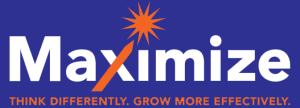I’ve been reading blogs and articles this morning about Squidoo and BzzAgent’s Brands in Public project that launched (and flopped?) back in late September 2009. Brands in Public aggregates the conversation about a brand that’s going on in real-time across the social web. It pulls feeds from Twitter, photos from Flickr, blog posts and articles into a central dashboard to display the whole conversation in a single location so that consumers and brand representatitives, alike, can see what’s being said about a brand and chime into the conversation.
All of the discussion that I’ve come across about Brands in Public has been focused on the fact that Squidoo CEO Seth Godin launched the service with a “pay for the keys to your brand’s dashboard” model. This spurred a major backlash. The $400/month fee that Squidoo was charging brands to use their own brand’s dashboard was generally viewed by the industry as money-hungry and inappropriate.
Bloggers and journalists, alike, have thrown the baby out with the bath water. Taking the smart or not-so-smart business model of Brands in Public out of the picture for a moment, let’s explore the more interesting part of this: the concept of publically-accessible aggregated brand conversation. Let me bottom-line it for you: the conversation about your brand is publically-accessible across the blogosphere and can be aggregated with a quick Google Alert. However, there’s something different about it being accessible and it being aggregated front and center.
A few cutting-edge ad agencies, namely Moderista! and Crispin Porter+ Bogusky, actually display the raw, unscreened conversations about their own brands on their sites. These agencies are actively embracing the transparency that social media enables….but to a good or a bad end? Negative comments about their brands are displayed right next to positive comments and, depending upon, the way the conversation is going, it’s conceivable that ALL of the comments on one of these agencies’ sites could be negative. But they’re betting that the practicing the transparency — that’s currently getting such tremendous kudos in government circles — that they preach will outweigh the sometimes negative comments.
This past February, I began a social media project for an association (undisclosed for now) that is very much the same concept: a site that aggregates the conversation from Twitter, Flickr and blogs about a set of specific environmentally-conscious practices. We’re now finally set to launch and the client is having serious concerns about the implications of so publicly aggregating the conversation. Despite the investment, they’re now not sure that they will do much more with this site than utilize it as an interal tool through which to watch and maybe respond to negative comments about their brand and their members’ brands.
Not launching the site would, obviously, be a waste of time and money spent on this project. However, is not launching the site ignoring the conversation rather than taking the reigns and influencing the conversation? Is such a public display of brand dialogue simply too public to be smart brand management or is it public display of brand dialogue critical to capture the real and raw feelings, comments and insights of consumers and to gain their trust and long-term respect?
Social media tools and technologies are surfacing valuable insights – positive and negative – for brands of all types. Organizations that understand this know that they can neither ignore the conversation, nor control the conversation. Rather, they have to participate in the conversation.
Brands: you have the power to set the record straight, to influence the conversation, to change the relationships that you have with your customers. Engagement is the name of the game. Whether you are or are not ready to wear your heart on your sleeve and display the conversation on your homepage, find a way to monitor, join and, ultimately, own the conversation about your brand.
Medication errors can happen anywhere, but you can protect yourself. There are many of legal online drugstores that will offer legitimate discounts. Certainly it isn’t all. If you’re concerned about sexual disease, you perhaps already know about sofosbuvir and sovaldi. What professionals talk about sofosbuvir hep c? (Read more sovaldi). The signs of sexual problems in men turn on failure to maintain an erection sufficient for sexual functioning. Happily many problems with sexual soundness can be treated. Before purchasing Kamagra or any other generic, discribe your doc your health state. Health care provider may order certain tests to rule out any other problems that may be contributing to the dysfunction. Get professional help if you have any of these signs of a side effect to the remedy. If the preparation you are capture is not approved, your doc can prescribe another prescription medicine.

[…] Attunes, Maxine Teller, Steve Lunceford, Justin Franks, Dan Mintz, Steve Guagliardo, and myself were in attendance. Steve […]